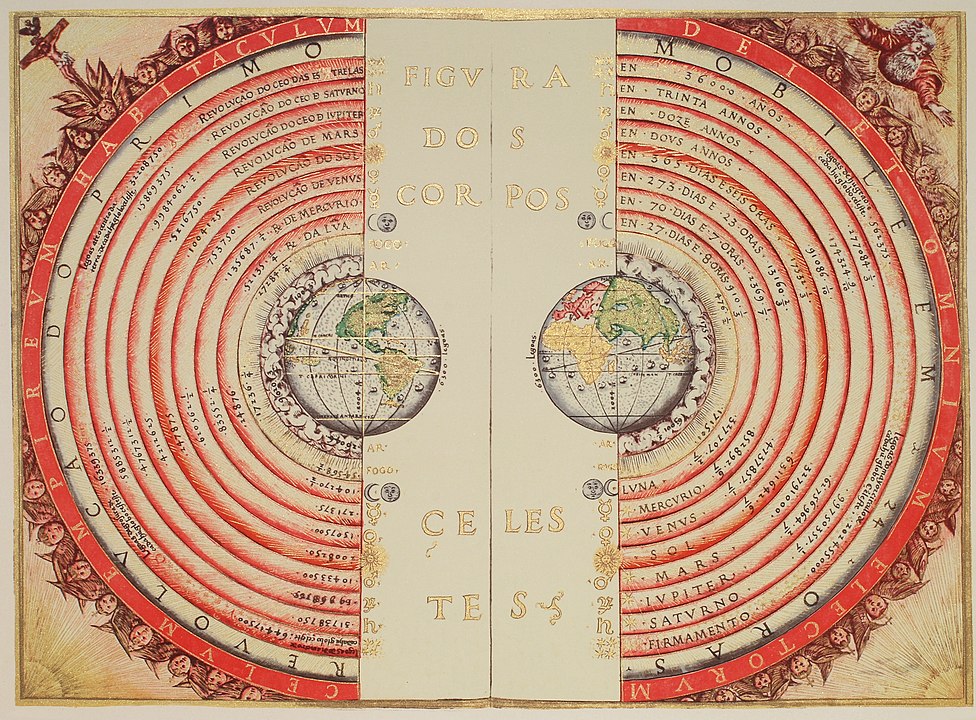3.2.2 Structure of Scientific Revolutions

Ptolemaic Geocentric Cosmology. Illustration by Bartolomeu Velho, 1568.
Perhaps the most influential work in the history and philosophy of science in the latter half of the twentieth century is Thomas Kuhn’s Structure of Scientific Revolutions. Kuhn demonstrated the importance of the history of science for doing good philosophy of science. He introduced new terms to the discipline, and subsequent development in the field can be said to be in conversation with Kuhn, whether in agreement or disagreement. This popular article in The Guardian celebrates Kuhn’s landmark contribution fifty years after its original publication. If it whets your appetite, you can pick up Kuhn’s book or click here to see an additional, supplemental article on him in the open source Stanford Encyclopedia of Philosophy which we have used previously.
Read: Thomas Kuhn: The man who changed the way the world looked at science // The Guardian
Guiding Questions:
- How did Kuhn’s model of scientific change differ from the previous model?
- What is a paradigm shift?
- How does Kuhn’s model relate to Dr. Barseghyan’s changing “scientific mosaics”?
Photo: “Figure of the heavenly bodies — An illustration of the Ptolemaic geocentric system by Portuguese cosmographer and cartographer Bartolomeu Velho, 1568 (Bibliothèque Nationale, Paris).” Photo Credit: Wikimedia, Bartolomeu Velho. Public domain.


